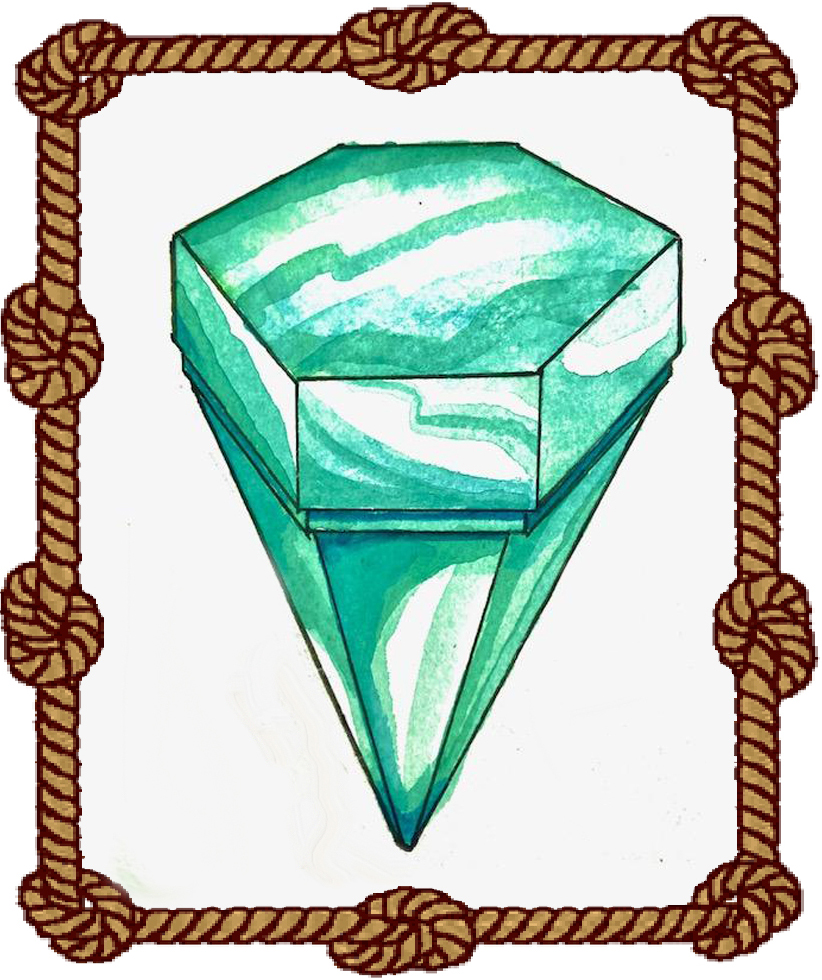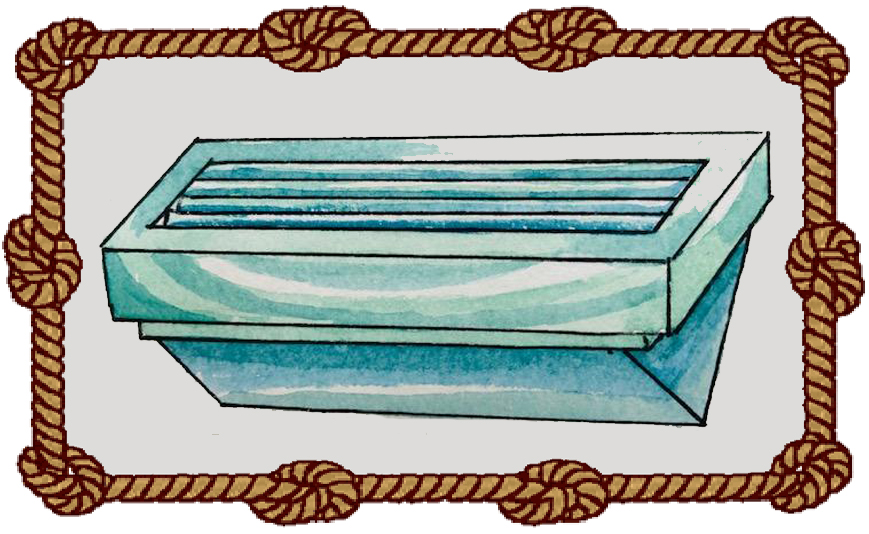
Stumbling below decks with a lighted lantern or candle on a wooden ship had definite risks. Oil lamps could drip, spill over and light a ship afire in no time. Candles had similar dangers. Lord knows how many ships afire sunk into King Neptune’s world for just those reasons. Sure, there were times you could open a hatch in calm seas to let a little light during the day, but there were limits to the number of hatches which were kept to a minimum because a hatch is basically a large hole in a ship. Should it break away in a howling storm, you have a BIG problem. So how do you get daylight below decks and minimize the dangers of lantern light to only nighttime? Answer that question and you reduce the risk of oil lantern fires by half.

The solution to this danger came relatively late in the history of wooden ships. In fact, nothing arose to help until the 1840s. Nonetheless, you will find it “Enlightening” to know that the problem was solved by inserting “Deck Prisms” flush onto and through the decks of a ship. The bottom of the prism would stick out below the underside of the decking acting like any bulb in a ceiling. The angles of the prism refracted incoming daylight thereby increasing the intensity of incoming light and transmitting it into the below-deck area. The bigger the vessel and deck area, the larger and more prisms inserted into the decks to illuminate areas below. The fact that these lenses were flush with the surface of the deck would keep the crew from ever tripping on them. These lenses would primarily work during daylight, but they could also offer a soft glow during full moon periods as moonlight is more intense at sea than over land.
The first major forays into the science of prisms came through the experiments of Sir Isaac Newton (1642-1726) whose work with light, lenses, and refraction came shortly after he got tired of dropping apples from trees to prove his theory of gravity. Newton was interested in achieving better clarity in telescopes and his experiments explored the nature, and transfer of light through glass and crystals, his experiments and findings were all published in his 1704 book “Optics”. Newton’s work led to better telescopes and clearer eyeglasses. All this was not lost on a clever colonial in Philadelphia by the name of Benjamin Franklin.

Ben was America’s first “Really, really, clever guy’’! Not only was Benny a printer, the first postmaster, ambassador, author, scientist, and one of our Founding Fathers, above all, he was an inventor. He was also a notorious lecher, but we won’t address that here. Some of his many inventions are – the lightning rod, swim fins, Franklin stove, Urinary Catheter (Ouch!), glass harmonica, and most importantly – bifocals, allowing weary-eyed folks the ability to see distance and read close fine print with the same pair of glasses. These experiments with glass lead Ben to make both the glass harmonica and bifocals that were cutting edge for the time and took place while he was living as Ambassador in France.
Newton’s and Franklin’s successful glass experiments were not lost on a French Physicist named Augustin Fresnel (1788-1827). Fresnel’s new experiments with light diffraction proved a light source could increase its power dramatically through glass through a system of planes or cuts in on class surfaces essentially forming prisms that would then project it far outward. This is a simplistic explanation of a complex subject, but the result was his invention of the Fresnel lens. It became the standard for lighthouses from the 1840s onward. His lens projected light farther than any system at that time, saving untold lives and ships from disaster. You can see several different sizes of Fresnel lenses at The Fire Island Lighthouse (Walk West from field 5 at Robert Moses State Park) and at the Twin Lights (Highlands New Jersey near the mouth of New York Harbor).
Sadly, there is no record of the who, when, and where the first deck prisms were envisioned, manufactured and inserted into decks to channel light below decks. Presently, we only know that it was rather late in the history of wooden ships. Deck light prisms first started appearing in the 1840s on whaling, trade ships and military vessels. Fishing and racing schooners also added them. Different shape prisms were added to the original round ones and came in square, rectangle and other shapes. Their functionality lasted only a few generations as advancements in steam power, electricity, generators, and light bulbs for the most part rendered them mostly obsolete as the great age of sail ended. You can see them in place and working on the last existing whaling ship, Charles W. Morgan, built in 1841 and still sailing.
Fortunately, the deck prism has not been forgotten. Today, the original prisms are highly valued as art pieces by many collectors. Indeed, they are considered museum art pieces. In addition, there are many reproductions on the market, online and in marine shops. Then there are those mariners who retrofit them into the decks of their boats to add a novel, authentic, source of daylight below deck.
C. 2022 by Mark (Sea) Nuccio, all rights reserved for both story and Illustrations
